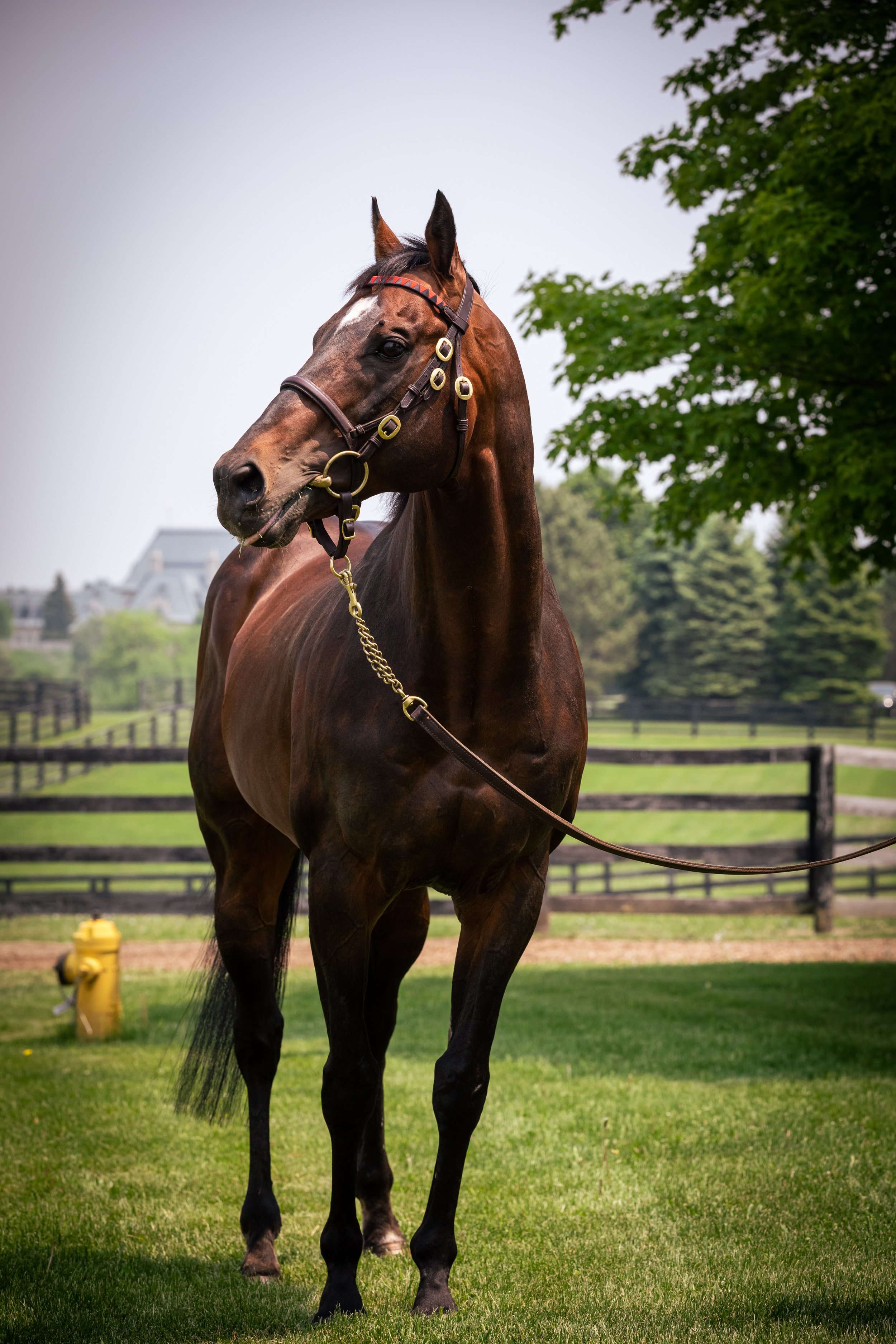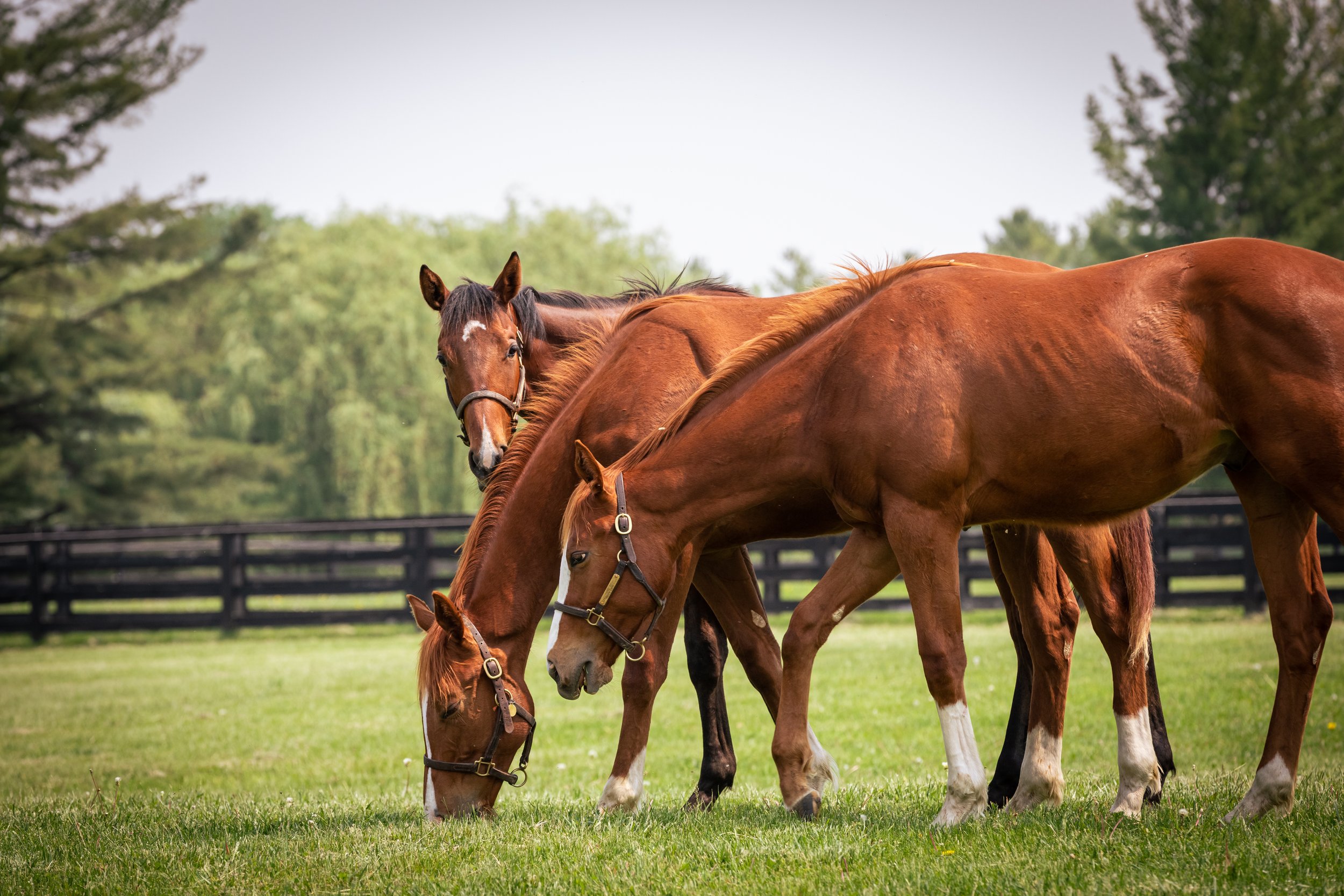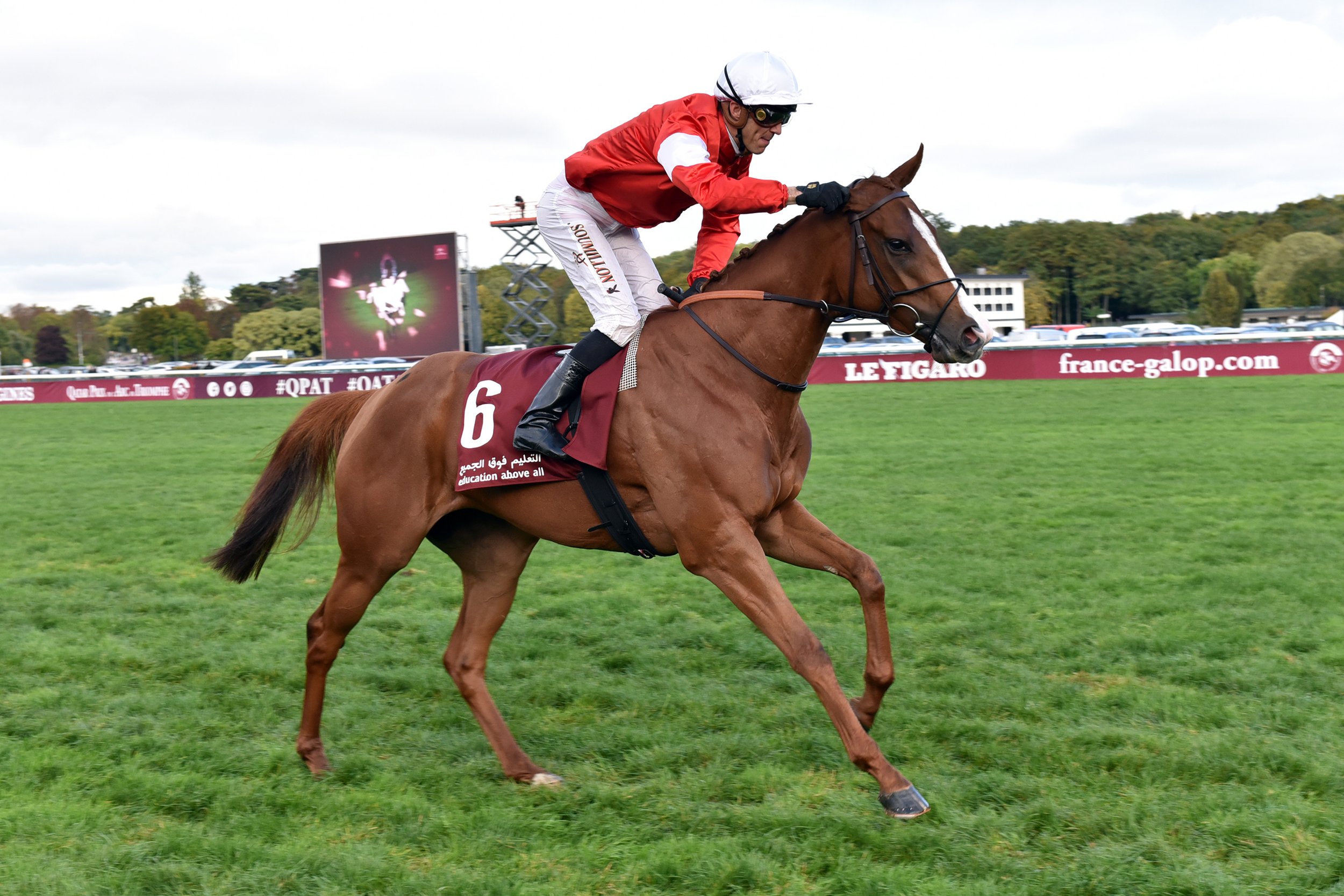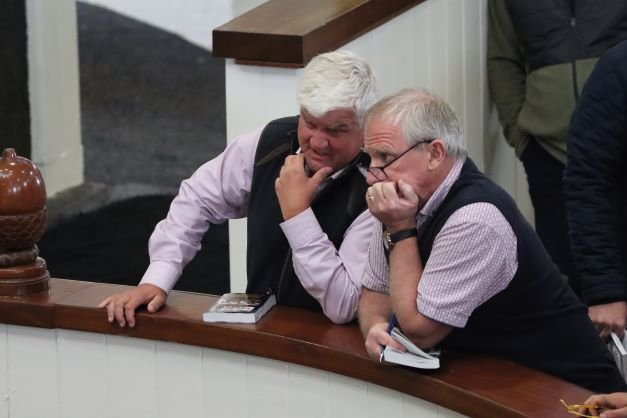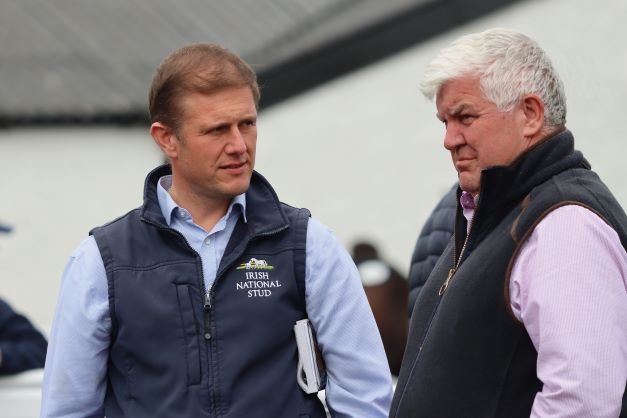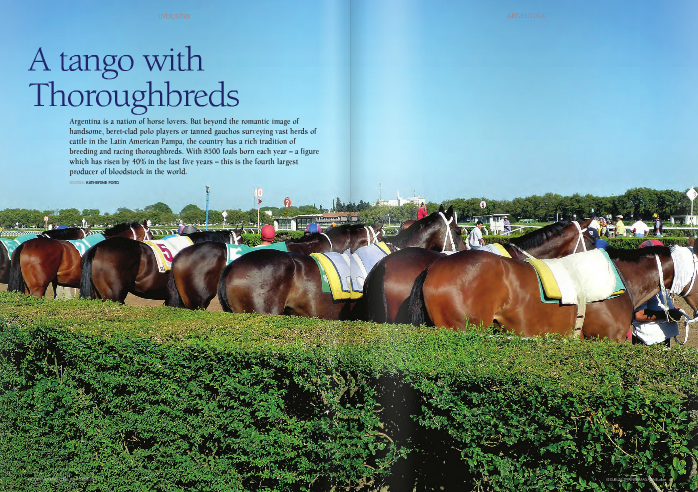Dangers of inbreeding and the necessity to preserve sire lines in the thoroughbred breed
/Inbreeding is the proportion of the genome identically inherited from both parents.
Inbreeding coefficients can be estimated from pedigrees, but pedigree underestimates the true level of inbreeding. Genomics can measure the true level of inbreeding by examining the extent of homozygosity (identical state) in the DNA of a horse. A mechanism to examine genomic inbreeding for breeding purposes has yet to be developed to be used by all breeders but once available, it must be considered as a tool for breeders.
Breeding of potential champion racehorses is a global multi-billion sterling or dollar business, but there is no systematic industry-mediated genetic population management.
Inbreeding in the modern thoroughbred
The thoroughbred horse has low genetic diversity relative to most other horse breeds, with a small effective population size and a trend of increasing inbreeding.
A trend in increased inbreeding in the global thoroughbred population has been reported during the last five decades, which is unlikely to be halted due to current breeding practices.
Ninety-seven percent of pedigrees of the horses included in a recent study feature the ancestral sire, Northern Dancer (1961); and 35% and 55% of pedigrees in EUR and ANZ contain Sadler’s Wells (1981) and Danehill (1986), respectively.
Inbreeding can expose harmful recessive mutations that are otherwise masked by ‘normal’ versions of the gene. This results in mutational load in populations that may negatively impact on population viability.
Genomics measured inbreeding is negatively associated with racing in Europe and Australia. The science indicates that increasing inbreeding in the population could further reduce viability to race.
In North America, it has been demonstrated that higher inbreeding is associated with lower number of races. In the North American thoroughbred, horses with higher levels of inbreeding are less durable than animals with lower levels of inbreeding. Considering the rising trend of inbreeding in the population, these results indicate that there may also be a parallel trajectory towards breeding less robust animals.
Note that breeding practices that promote inbreeding have not resulted in a population of faster horses. The results of studies, generated for the first time using a large cohort of globally representative genotypes, corroborate this.1,3
Health and disease genes
It is both interesting and worrisome to consider also that many of the performance-limiting genetic diseases in the thoroughbred do not generally negatively impact on suitability for breeding; some diseases, with known heritable components, are successfully managed by surgery (osteochondrosis dessicans, recurrent laryngeal neuropathy, for example), nutritional and exercise management (recurrent exertional rhabdomyolysis), and medication (exercise induced pulmonary haemorrhage). This unfortunately facilitates retention of risk alleles in the population and enhances the potential for rapid proliferation of risk alleles if they are carried by successful stallions.
Types of inbreeding
Not all inbreeding is bad. Breeders have made selections for beneficial genes/traits over the generations, resulting in some inbreeding signals being favoured as they likely contain beneficial genes for racing. Importantly, examination of a pedigree cannot determine precisely the extent of ‘good’ and ‘bad’ inbreeding. This can only be determined from DNA analysis.
Historic inbreeding (arising from distant pedigree duplicates) results in short stretches of DNA identically inherited from sire and dam.
This may be considered ‘good’ inbreeding.
It has no negative effect on racing.
The horse may be carrying beneficial mutations that have been maintained from distant ancestors through breeders’ selection.
Recent inbreeding (arising from close pedigree duplicates) results in long stretches of DNA identically inherited from sire and dam.
This may be considered ‘bad’ inbreeding.
It is negatively associated with racing.
The horse may be carrying harmful mutations that have not yet been ‘purged’ from the population.
Obviously, in terms of breeding, it’s always possible to find examples and counterexamples of remarkable individuals; but the science of genetics is based on statistics and not on individual cases.
Sire lines
Analysis of the Y chromosome is the best-established way to reconstruct paternal family history in humans and animal species. The paternally inherited Y chromosome displays the population genetic history of males. While modern domestic horses (Equus caballus) exhibit abundant diversity within maternally inherited mitochondrial DNA, until recently, only limited Y-chromosomal sequence diversity has been detected.
Early studies in the horse indicated that the nucleotide variability of the modern horse Y chromosome is extremely low, resulting in six haplotypes (HT). However, this view has changed with the identification of new genetic markers, showing that there is considerably more genetic diversity on the horse Y chromosome than originally thought. Unfortunately, in thoroughbreds, the male gene pool is restricted, with only three paternal lines remaining.
The Institute of Animal breeding and genetics of the Veterinary Medicine School at Vienna applied fine-scaled Y-chromosomal haplotyping in horses and demonstrated the potential of this approach to address the ancestry of sire lines. They were able to show the microcosmos of the Tb-clade in the thoroughbred sire lines.
It is interesting to note that more than half of the domestic horses in the dataset (76 of 130) have a Y chromosome with a thoroughbred ‘signature’. These includes thoroughbreds, standardbreds, many thoroughbred-influenced breeds (warmbloods, American quarter horses, Franches-Montagnes, a Lipizzan stallion and the Akhal-Tekes).
The General Stud Book shows that thoroughbred sire lines trace back to three founding stallions that were imported to England at the end of the 17th century. 5 Now, the heritage of the thoroughbred sire lines can be better understood using Y chromosome information. It is now possible to clearly distinguish sublines of Darley Arabian, born in 1700 (Tb-d) and Godolphin Arabian, born in 1724 (formerly Tb-g, now Tb-oB3b). The third founder, Byerley Turk, born in 1680, was characterised by the Tb-oB1 clade. According to pedigree information, only few of the tested males trace back paternally to Byerley Turk, which are nearly extinct.
There are now 10 different Y chromosome sub-types known in the thoroughbred. Two come from the Godolphin Arabian, five come from Byerley Turk, and three come from Darley Arabian.
Even if genetic analysis shows that there was an error in the stud book recording of St Simon’s parentage and that horses descending from St Simon should be attributed to the Byerley Turk lineage, probably 90% of the current stallions are from the Darley Arabian male line. So, there is a true risk that we could lose a major part of the Y chromosome diversity.
Conclusions and solutions
We should do everything we can to ensure that thoroughbreds are being sustainably bred and managed for future generations. With the breeding goal to produce viable racehorses, we need to ask ourselves, are we on track as breeders?
If inbreeding is negatively affecting the chances of racing and resulting in less durable racehorses, will this continue to affect foal crops in the future? How can we avert the threat of breeding horses that are less able to race? If the ability to race is in jeopardy, then is the existence of the thoroughbred breed at risk?
International breeding authorities are studying the situation and thinking about general measures allowing the sustainability of the breed.
Breeders
What can individual breeders do to produce attractive foals that are safe from genetic threats? How do you avoid the risk of breeding horses that are less fit to race?
There is no miracle recipe, and each breeder legitimately has his preferences.
An increasingly important criteria for the choice of a stallion is his physical resistance and his vitality, as well as those of his family. It is often preferable to avoid using individuals who have shown constitutive weaknesses, or who seem to transmit them.
The use of stallions from different male lines can make it possible to sublimate a strain and better manage the following generations. The study of pedigrees must exceed the three generations of catalogue pages.
In the future, genomics—the science that studies all the genetic material of an individual or a species, encoded in its DNA—will certainly be able to provide predictive tools to breeders. This is a track to follow.
Trainers
Trainers should be aware of the danger of ‘diminishing returns,’ where excessive inbreeding occurs. Today, when animal welfare and the fight against doping are essential parameters, it is obvious that trainers must be aware of the genetic risks incurred by horses possibly carrying genetic defects.
Together with bloodstock agents, trainers are the advisers for the owners when buying a horse. Trainers already know some special traits of different families or stallions, but genomic tools might become essential for them too.
Sources
1. Genomic inbreeding trends, influential sire lines and selection in the global Thoroughbred horse population Beatrice A. McGivney 1, Haige Han1,2, Leanne R. Corduff1, Lisa M. Katz3, Teruaki Tozaki 4, David E. MacHugh2,5 & Emmeline W. Hill ; 2020. Scientific Reports | (2020) 10:466 | https://doi.org/10.1038/s41598-019-57389-5
2. Inbreeding depression and durability in the North American Thoroughbred horse Emmeline W. Hill, Beatrice A. McGivney, David E. MacHugh; 2022. Animal Genetics. 2023;00:1–4. _wileyonlinelibrary.com/journal/age
3. Founder-specific inbreeding depression affects racing performance in Thoroughbred Horses. Evelyn T. Todd, Simon Y. W. Ho, Peter C. Thomson, Rachel A. Ang, Brandon D. Velie & Natasha A. Hamilton; 2017. Scientific Reports | (2018) 8:6167 | DOI:10.1038/s41598-018-24663-x
4. The horse Y chromosome as an informative marker for tracing sire lines Sabine Felkel, Claus Vogl , Doris Rigler, Viktoria Dobretsberger, Bhanu P. Chowdhary, Ottmar Distl , Ruedi Fries , Vidhya Jagannathan, Jan E. Janečka, Tosso Leeb , Gabriella Lindgren, Molly McCue, Julia Metzger , Markus Neuditschko, Thomas Rattei , Terje Raudsepp, Stefan Rieder, Carl-Johan Rubin, Robert Schaefer, Christian Schlötterer, Georg Thaller, Jens Tetens, Brandon Velie, Gottfried Brem & Barbara Wallner; 2018. Scientific Reports | (2019) 9:6095 | https://doi.org/10.1038/s41598-019-42640-w
5. Identification of Genetic Variation on the Horse Y Chromosome and the Tracing of Male Founder Lineages in Modern Breeds Barbara Wallner, Claus Vogl, Priyank Shukla, Joerg P. Burgstaller, Thomas Druml, Gottfried Brem Institute of Animal Breeding and Genetics, Depart. 2012. PLOS ONE | www.plosone.org April 2013, Volume 8, Issue 4, e60015
6. New genetic evidence proves that the recorded pedigrees of the influential leading sires Bend Or and St. Simon were incorrect. Alan Porter; ITB 2021
7. Eight Belle’s breakdown: a predictable tragedy William Nack; ESPN.com 2008
8. Suzi Prichard-Jones: Founder of "The Byerley Turk & Godolphin Arabian Conservation Project"
Special thanks to Emmeline Hill for her help in the completion of this article



